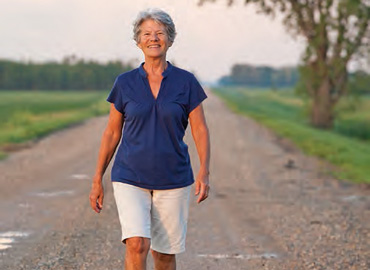
Balance exercises can help those with dementia reduce their likelihood of falls, maintain their independence longer and improve their quality of life.
By Jennifer Sellers
Whether the person you’re caring for is someone who can still engage in many of the activities of daily living or someone who needs regular assistance, improved balance has multiple benefits. It can make physical activities easier, and it can decrease falls and related injuries, such as hip fractures. Exercise can also improve sleep, which can help the person be more alert and sure-footed during the day.
Research Shows Benefits
A recent study published in the Journal of the American Geriatrics Society found that high-intensity functional exercises can improve balance in those with dementia and reduce their dependence on caregivers for certain activities. In the study, participants exercised for 45 minutes, two to three times per week.
The exercises focused on improving leg strength, walking and balance.
Exercise can also help those with more advanced dementia. Finnish researchers studied the impact of exercise in patients with Alzheimer’s disease and found that those in exercise groups had significantly fewer falls than those in other groups. This is a significant benefit, considering people with Alzheimer’s are three times more likely to suffer from fall-related hip fractures than seniors without the disease.
Because dementia is progressive, no exercise program can help maintain independence indefinitely. While people with non-Alzheimer’s-related dementia seem to benefit more from exercise than those with the disease, exercise can still slow the deterioration of balance in most people with any type of dementia.
Getting Started
It may be helpful to find a trainer or physical therapist who specializes in exercises for the elderly. A local senior center can be a good resource for finding an exercise professional. Many centers also offer on-site classes. Exercises can be done at home, just make sure you follow basic safety precautions:
- Get a doctor’s approval
- Keep the exercise area clear of furniture and clutter
- Practice warm-ups and cool-downs
- Ensure the person has something or someone to hold onto
- Use no-skid mats
If you do the exercises at home, ask your doctor or physical therapist to recommend different exercises. You can also find videos and exercise guides through the National Institute on Aging at https://www.nia.nih.gov/health/publication/exercise.










